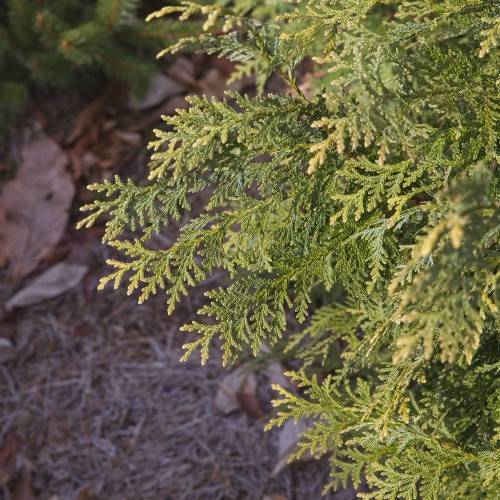
Korean arborvitae
Thuja koraiensis 'Glauca Prostrata'
Cycle:
Perennial
Watering:
Average
Hardiness Zone:
5 - 7
Flowers:
Flowers
Sun:
Full sun,part shade
Cones:
Yes
Growth Rate:
Low
Maintenance:
Low
Drought Tolerant:
Yes
Care Level:
Low
watering
Korean arborvitae should be watered once or twice per week during the warmer summer months and whenever the top inch of the soil feels dry to the touch. During the cooler winter months, reduce the frequency of watering to about once every 2 to 3 weeks, depending on the weather. It is important not to overwater this plant, as it is susceptible to root rot. An ideal way to ensure adequate watering is to use a drip irrigation system, which provides water to plants slowly and over an extended period of time.
sunlight
Korean arborvitae (Thuja koraiensis 'Glauca Prostrata') require a minimum of 4 to 6 hours per day of direct sunlight for optimal growth and health. It is important to note that this plant species prefers a slightly acidic soil so if grown near the coast, it will need to be provided with some protection from salt spray. The best time of day for Korean arborvitae to receive sunlight is during the early morning or late afternoon when the sunlight is softer and less intense.
pruning
Korean arborvitae (Thuja koraiensis 'Glauca Prostrata') should be pruned lightly during the spring, once the new growth begins. Pruning should focus on shaping and removing any dead or damaged branches. Large-scale pruning should be avoided since it encourages excessive new growth and may lead to wind or snow damage. Try to keep the shape of the plant natural and symmetrical as much as possible. Avoid pruning off large portions of the top of the plant, as this can make the tree vulnerable to pests and diseases.
